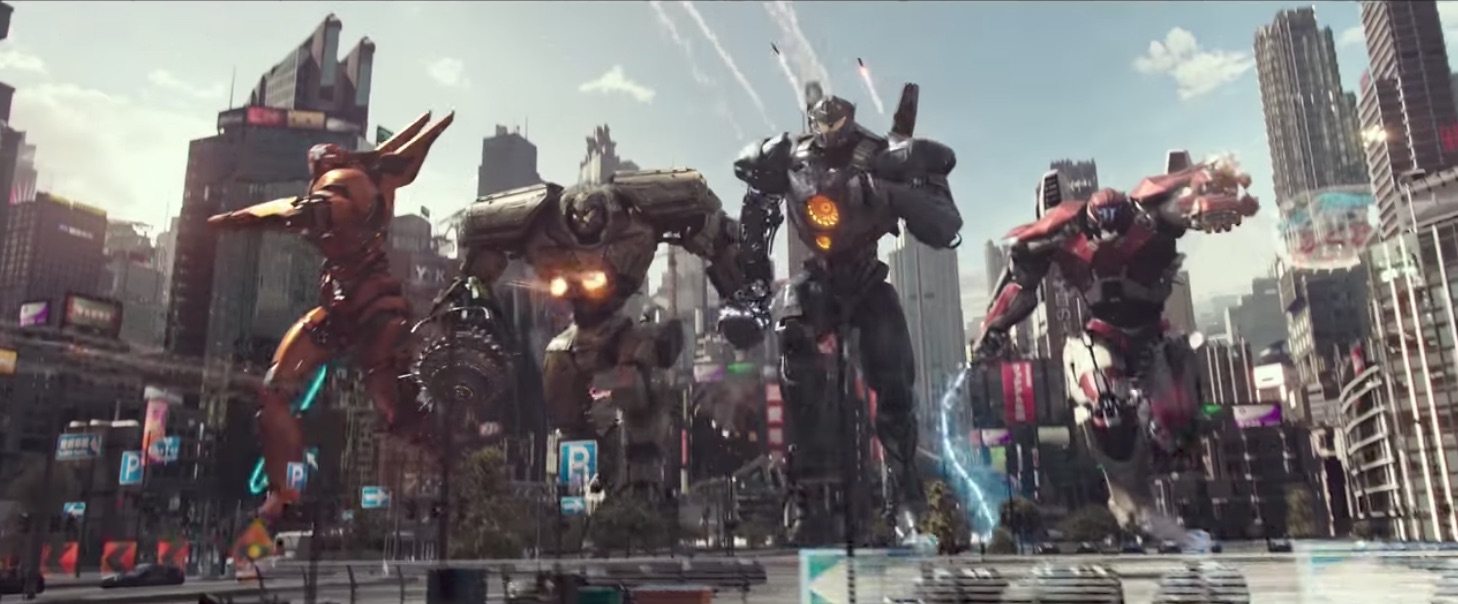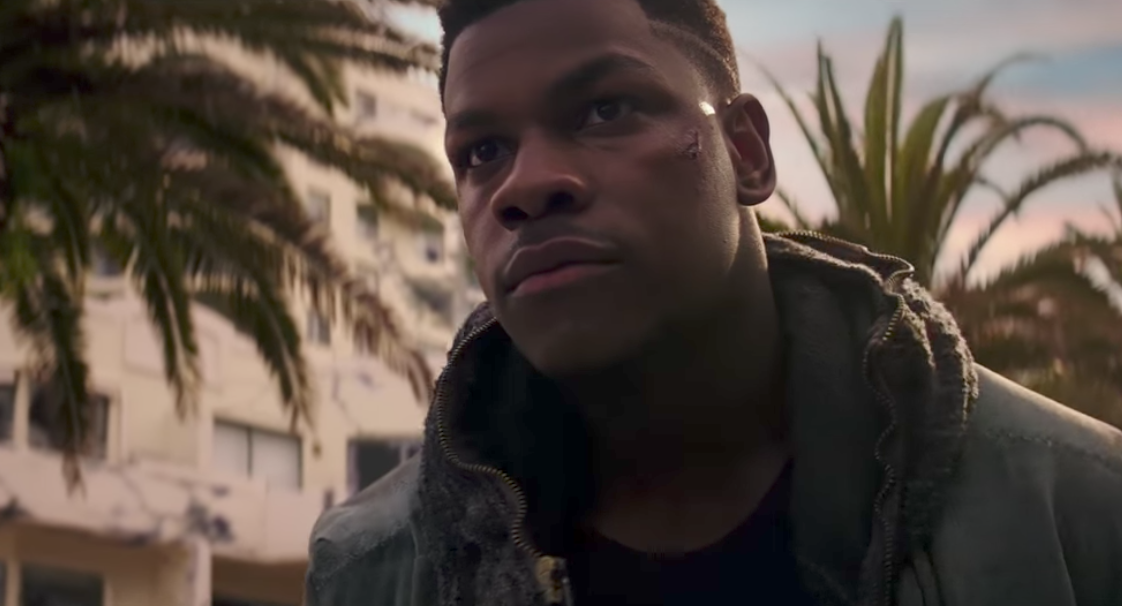Plasma 'Lightsabers' and Gravity Slings: 'Pacific Rim Uprising' Will Get Space-Age Tech
NEW YORK — "Pacific Rim Uprising" is set to take the first film's monster-fighting mayhem up a notch, according to the upcoming movie's creators and actors.
Last Friday (Oct. 6), fans of the 2013 action film "Pacific Rim: packed The Theater at Madison Square Garden here at New York Comic Con to learn about the technology featured in the highly anticipated sequel, "Pacific Rim Uprising," coming out in March 2018.
The "Pacific Rim" series is set in a future world where an inter-dimensional portal opens underneath the Pacific Ocean and allows titanic monsters known as Kaiju to wreak havoc on human societies. In defense, humans have built giant mechanical fighter bots known as Jaegers to stop the insurgence, and each Jaeger requires at least two people joined in a mental link to operate it. ['Pacific Rim: Uprising' with Jetpacks! Trailer Shows Mechs on Rockets]
One key difference in the new movie? "The Jaegers look cooler: super heavy-metal machines," said Aaron Sagers, editor-at-large at Syfy Wire and moderator of the panel.
Director Steven S. DeKnight and actors Burn Gorman, Cailee Spaeny, Scott Eastwood and sci-fi favorite John Boyega joined Sagers to answer questions about the upcoming film, which continues the struggle 10 years after the first film's Jaeger and Kaiju combat. [End of the World As We Know It: What's the Draw of Dystopian Sci-Fi?]
According to DeKnight, the new film aims to "show a new generation of pilots that have known nothing but a world of chaos."
2013's "Pacific Rim" was envisioned and directed by Guillermo del Toro, also known for writing and directing "Pan's Labyrinth" and the "Hellboy" films.
Breaking space news, the latest updates on rocket launches, skywatching events and more!
DeKnight underlined the storyline's subtext while talking about the franchise he inherited, and cited one key reason so many fans are looking forward to the sequel.
"One of the important things we wanted to show in the movie is that it doesn't matter where you're from; it doesn't matter who your parents are. [It] doesn't matter the color of your skin, or your religion, your sexual orientation. You can make a difference," DeKnight said. "You can actually be a hero. That it's the human inside the Jaeger that is super. It's you, times a thousand." His words were met with a loud cheer from the audience.
Fans were also excited to hear about the upgraded Jaeger models that would combat in the new film, since they were all destroyed in the first movie. "Since it's been 10 years [in the film’s storyline], they've had a chance to redesign the Jaegers from the ground up," DeKnight said.
According to DeKnight, the "badass" mechanical war suits in "Uprising" are part of a more unified, collaborative effort by the fictional United Nations' Pan Pacific Defense Corps (PPDC) to fight the Kaiju.
"The PPDC has come together as an international fighting force … It's all of humanity working together," DeKnight said.
The new Jaeger league in "Uprising" is led by the fighter Gipsy Avenger, the successor to Gipsy Danger. Though DeKnight used those names for the bots, some fans are choosing to use "Lady Danger," "de Havilland Danger," "G Danger," or merely "Danger" when referring to the Jaeger, to avoid offending the Roma people, according to a fan-written "Pacific Rim" encyclopedia. (The word "Gypsy" is considered a racial slur to that community.)
Two of the highlighted Jaeger upgrades might be of particular interest to space enthusiasts: Danger's gravity sling, which will allow it to pull buildings and cars and hurl them at the Kaiju, and Saber Athena's plasma swords. [7 Big Surprises From the Star Wars: The Last Jedi Trailer]
The real-life HyperV Technologies program is developing the Slingatron, which would generate a spiral motion to achieve a centrifugal force that could launch objects. The Slingatron was first developed as an idea in 1994, and though it's not designed to combat Godzilla-like monsters, it is intended to offer an efficient way of transporting supplies should humanity reach asteroids for mining or travel to Mars.
Plasma swords are reminiscent of lightsabers, the classic sci-fi weapons of "Star Wars." Plasma can be manipulated into shapes and contained, and the substance can cut and melt, but existing plasma technology requires an electrical source and would be at such a high temperature that it would melt its metal container as well. Alas, it remains a figment of science fiction.
The actors were visibly enlivened by the strong reactions of the crowd, and Boyega took a moment to address the fans.
"This is a great ensemble piece and something that we're very excited to show you!" Boyega said moments before the debut of the "Uprising" trailer. "It's fun; it's action; it's everything you want 'Pacific Rim' to be!"
Follow Doris Elin Salazar on Twitter @salazar_elin. Follow us @Spacedotcom, Facebook and Google+. Original article on Space.com .

Doris is a science journalist and Space.com contributor. She received a B.A. in Sociology and Communications at Fordham University in New York City. Her first work was published in collaboration with London Mining Network, where her love of science writing was born. Her passion for astronomy started as a kid when she helped her sister build a model solar system in the Bronx. She got her first shot at astronomy writing as a Space.com editorial intern and continues to write about all things cosmic for the website. Doris has also written about microscopic plant life for Scientific American’s website and about whale calls for their print magazine. She has also written about ancient humans for Inverse, with stories ranging from how to recreate Pompeii’s cuisine to how to map the Polynesian expansion through genomics. She currently shares her home with two rabbits. Follow her on twitter at @salazar_elin.



